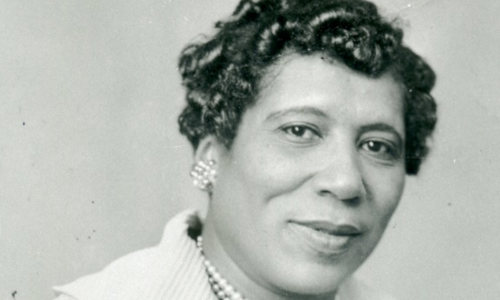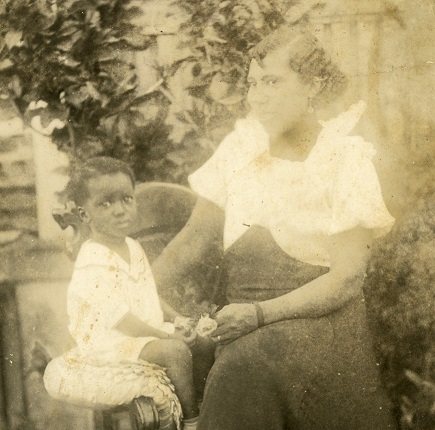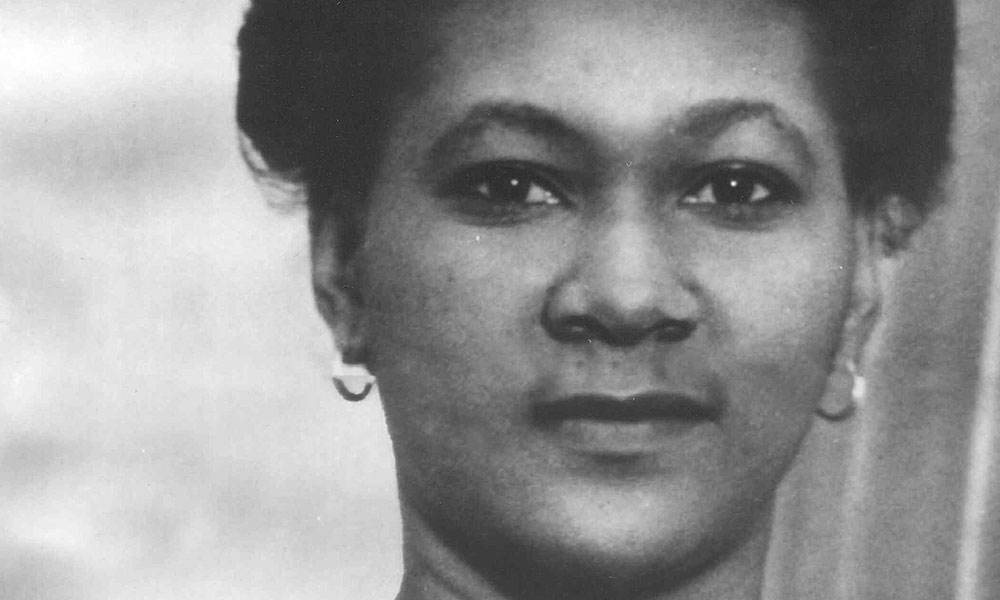
Inez Barker was born on the 29th May 1911 and christened Inez Susanna Billinghurst Walker. Her father was Frederick Alfred Walker an estate manager living in Old Road. Her mother was Catherine Louisa nee French, who was born Antigua but who was living in Old Road at the time of her marriage to Walker. Catherine described herself as a seamstress on her marriage certificate The children grew up in their maternal grandfather’s house – the Manhattan. After his death, the property was sold, and Catherine bought a two storey building on the West Square Street. Inez and her older brother Charles were educated at the Convent School in Basseterre where the discipline of the home was further encouraged and where their mother’s eloquence in standard English was reinforced.
Inez married George Barker in her early twenties. He was a Guyanese sugar boiler who came to St. Kitts to work at the Basseterre Sugar factory. George Barker was a champion cyclist in his country and he introduced cycling as a sport in St. Kitts. Barker also brought his photographic skills to Basseterre. The couple had three sons who grew up in the family home on the Square which also housed the Photo Studio on the ground floor.

Barker encouraged his young wife to participate in his photography sessions and she proved to have a talent for it. Not only did she learn the techniques of using the camera, and developing negatives, her calm and easy manner made the sitters feel comfortable. She knew how to pose them to the best effect and was very adapt at dealing with children, catching their attention for the camera at just the right moment. When George Barker died in 1939, his very young widow was able to step into his trade and continue the business.
At a time when the mass appeal of photography was in its infancy, Inez Barker’s skill at making her subjects feel comfortable attracted people to her studio. Many went to her for passport photographs when they were preparing to migrate in search of work, others would wander to it to send photographs to family and friends abroad or to capture the outfit that they felt great in. She photographed cricket and football teams both local and visitors and Regiments stationed in St. Kitts. Her dark room was used to develop negatives for Police investigations as the Force did not have one at the time. Mrs. Barker was the photographer of weddings and special events and then from 1957 Carnival became an annual event that kept her very busy. She served on the Organizing Committee and took photographs of the various shows and parades. Through hard work and professionalism, she became the first Kittitian woman to work as a photographer.
Two rooms in the Barker Household were set aside as guest rooms. These were often occupied by visitors to Basseterre. Cricketers in particular found this to be an inexpensive arrangement when traveling for matches. They would bring boxes of food to share with the hosts who gave them lodgings and they also shared descriptions of matches and travels. Mrs. Barker enjoyed meeting people and loved to hear their stories. She had friends in many Caribbean islands, North America and the UK. She was generously hospitable. Whenever friends and family visited, she organized picnics at Frigate Bay and took along food, drinks and her camera. She also enjoyed writing letters and would often be seen awaiting appointments with a notebook on her lap composing her messages to friends and family abroad.
On a small but heavy New National sewing machine that her mother had bought while in England, Inez Barker sewed new clothes and repaired the ones her sons wore giving them a lesson in frugality. She also refused to replace her machine with a Singer, that was the craze at the time. Mrs. Barker was able to send her three sons to Convent School and then to the Grammar School. She kept discipline within her household while allowing her sons to enjoy good company and participate in cultural events. Her love of history – Kittitian, West Indian and African - ensured that they grew up with a sense of pride in their heritage and they quickly learnt to appreciate the people in the community who had contributed to its development.
Despite the energy it must have taken to bring up three boys on her own, Mrs. Barker was an active member of the Methodist Church and still found time to become involved in community programmes. She worked with in the Million Penny Scheme launched by Millie Neverson to raise funds to provide a home for orphaned children and in the Lunch Room which provided meals for the needy children of the town during the Second World War.
Inez Barker, known as Dolly, was a great photographer because she loved people and she had a zest for life that was infectious. A woman with a big heart, her funeral in April 1977 was attended many including friends who made the journey to St. Kitts to say their final good-byes as well as dignitaries of the island.




